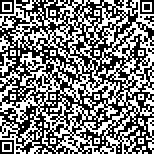陶希,李璐,唐文静,等.觅食运动对脑卒中后抑郁大鼠行为及额叶5羟色胺1A受体/转化生长因子β1的影响[J].中华物理医学与康复杂志,2022,44(2):110-115
扫码阅读全文

|
| 觅食运动对脑卒中后抑郁大鼠行为及额叶5羟色胺1A受体/转化生长因子β1的影响 |
|
| |
| DOI:10.3760/cma.j.issn.0254-1424.2022.02.003 |
| 中文关键词: 觅食运动 卒中后抑郁 脑梗死体积 慢性应激 5羟色胺1A受体 转化生长因子β1 |
| 英文关键词: Foraging exercise Post-stroke depression Cerebral infarction volume Chronic stress 5-Hydroxytryptamine 1AR Transforming growth factor β1 |
| 基金项目:湖南省自然科学基金(2018JJ6104);湖南省卫健委科研计划项目(20200176);湖南省教育厅科学研究项目(20C1172);湖南省人民医院仁术基金(RS201812) |
|
| 摘要点击次数: 4182 |
| 全文下载次数: 7137 |
| 中文摘要: |
| 目的 探讨觅食运动(FE)对脑卒中后抑郁(PSD)大鼠行为学及额叶5羟色胺(5-HT)1A受体与转化生长因子β1(TGF-β1)表达的影响。 方法 选取36只健康雄性SD大鼠及2只健康雌性SD大鼠(供行为学评估用)。将36只雄性SD大鼠随机分为缺血再灌注(I/R)组、PSD组及PSD+FE组(FE组),每组12只。采用线栓法制作大鼠右侧大脑中动脉闭塞(MCAO)模型,缺血时间1.5 h。造模术后1周,PSD组与FE组行慢性不可预见的温和刺激(CUMS),共3周。此后I/R组大鼠集中饲养,PSD组大鼠单笼饲养,FE组大鼠单笼饲养且自由觅食,共4周。造模术后4周及8周,测量各组大鼠体质量,行旷场试验(OFT)、社交试验(SIT)及糖水偏嗜试验(SPT)评定。术后8周处死大鼠,行脑组织TTC染色、HE染色,采用Western blot法检测大鼠额叶5-HT 1A受体/TGF-β1表达变化。 结果 术后4周,与I/R组比较,PSD组与FE组大鼠体质量减轻,穿格子数及直立次数较少,对嗅潜伏期延长及对嗅次数减少,SP降低(均P<0.05)。术后8周,与PSD组比较,FE组体质量增加,穿格子数及直立次数较多,对嗅潜伏期缩短、对嗅次数增加,SP增加(P<0.05)。与组内术后4周比较,术后8周各组大鼠体质量均增加,FE组对嗅潜伏期缩短、对嗅次数增加,PSD组与FE组穿格子数、直立次数及SP增加(P<0.05)。PSD组及FE组右侧半球残存脑体积比均较I/R组明显减少(P<0.05),PSD组与FE组右侧残存脑体积比比较,差异无统计学意义(P>0.05)。HE染色显示FE组额叶病理形态改变较PSD组轻。术后8周,FE组5-HT 1A受体及TGF-β1增加较PSD组明显(P<0.05)。 结论 FE可改善PSD大鼠的抑郁行为症状,其机制可能与减轻额叶病理损伤,增加额叶5-HT 1A受体及TGF-β1表达有关。早期慢性应激可能会增加脑卒中后大鼠的脑梗死体积。 |
| 英文摘要: |
| Objective To explore the effect of foraging exercise (FE) on the behavior of rats with post-stroke depression (PSD) and the expression of 5-Hydroxytryptamine 1A (5-HT1A) receptor and transforming growth factor β1 (TGF-β1) in their frontal lobes. Methods Thirty-six healthy male Sprague-Dawley rats were randomly divided into an ischemia-reperfusion (I/R) group, a PSD group and a PSD+FE (FE) group, each of 12. The right middle cerebral artery of each was occluded using the thread occlusion method with 1.5h of ischemia. In the PSD and FE groups, mild stimulation was administered at unpredictable intervals over 3 weeks beginning 1 week after the successful modeling. The rats in the I/R group were raised in a group. Those in the PSD group were raised in individual cages. Those in the FE group were raised in a single cage and foraged freely for a total of 4 weeks. Four and eight weeks after the modeling, the body weights were measured, and the open field, social interaction (SIT) and sugar preference tests were administered to all of the groups. Four weeks later, all of the rats were sacrificed and their brains were sliced and stained. The expression of 5-HT1A receptor and TGF-β1 in the frontal lobe was detected using western blotting. Results One week after modeling, there was no significant difference in average body weight or the average behavioral scores among the three groups. After four weeks the PSD and FE groups had significantly lower average body weight than the I/R group, fewer counts of rearing and grid crossing, longer SIT latency, less interaction time and lower average sugar preference (all significant differences). After eight weeks the average body weight had increased in each group. SIT latency had shortened and interaction time had increased in the FE group, and the rearing and grid crossing counts and sugar preference had increased in the PSD and FE groups. At that point the FE group had significantly greater average body weight than the PSD group, more counts of rearing and grid crossing, shorter SIT latency, increased interaction time, and greater sugar preference. The ratio of residual brain volume in the right hemisphere of the PSD and FE groups was significantly lower on average than in the I/R group. However, there was no significant difference in the right residual brain volume ratio between the PSD and FE groups. Staining revealed that the pathological changes in the frontal lobes of the FE group had been significantly relieved compared with the PSD group. Eight weeks after the operation the increases in average 5-HT 1A receptor and TGF-β1 levels in the FE group were significantly greater than in the PSD group. Conclusion Foraging can relieve the depressive symptoms of rats modeling post-stoke depression. The mechanism may be related to alleviating the pathological damage and increasing the expression of 5-HT1AR and TGF-β1 in the frontal lobe. Early chronic stress may increase the volume of cerebral infarction, at least in rats. |
|
查看全文
查看/发表评论 下载PDF阅读器 |
| 关闭 |
|
|
|